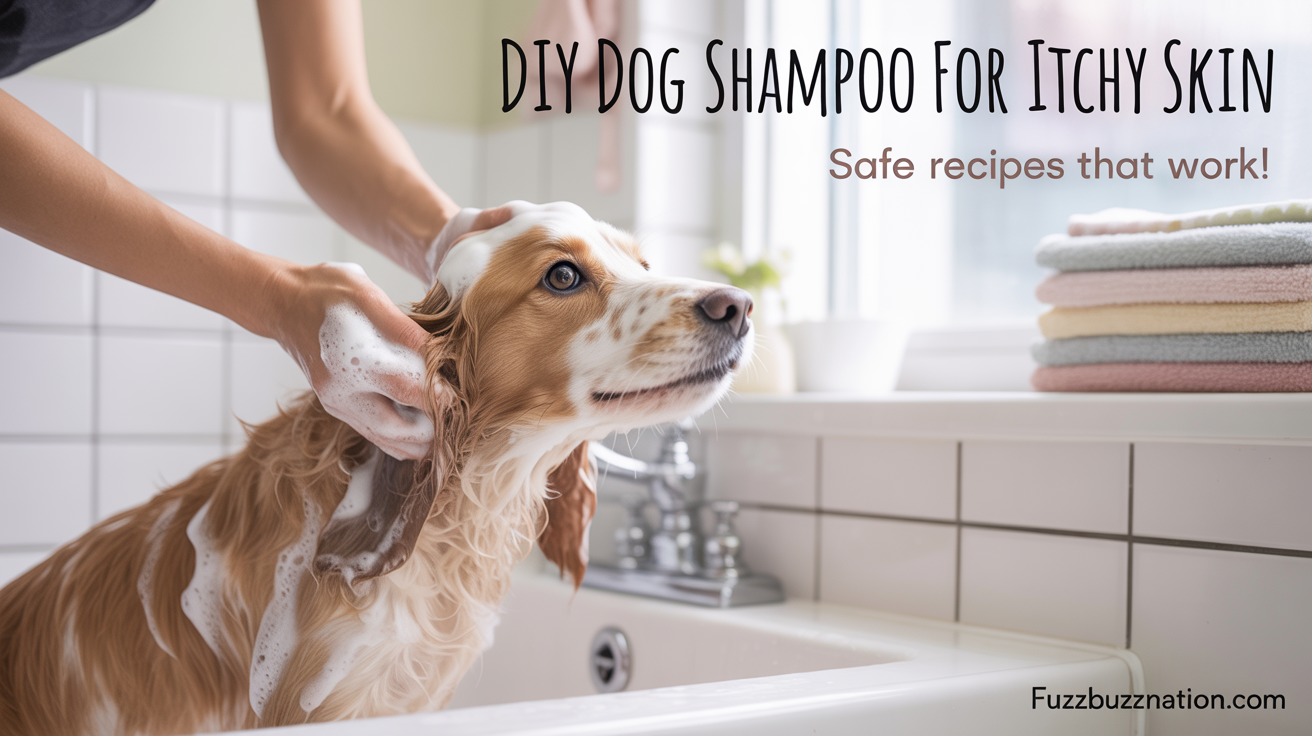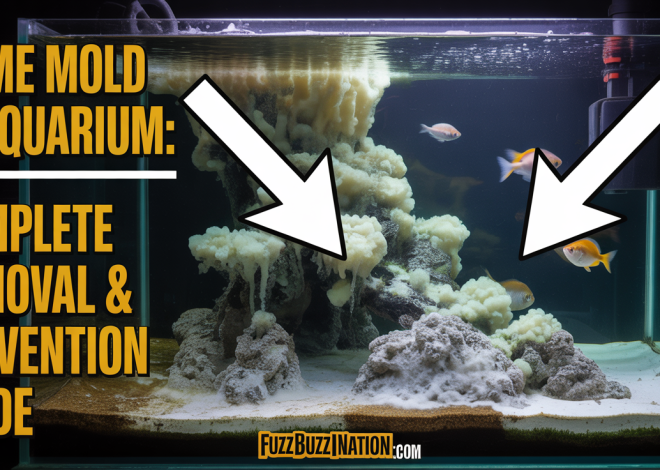
DIY Dog Shampoo for Itchy Skin: Safe Recipes That Work
Your dog’s itchy skin can find relief with simple, safe homemade shampoos that cost 80% less than commercial alternatives. The key lies in understanding your dog’s unique skin needs and using veterinary-approved ingredients that soothe irritation without causing harm.
In my experience helping pet parents navigate skin sensitivities, I’ve noticed that colloidal oatmeal consistently provides the fastest relief for most dogs with mild to moderate itching. This approach matters because dogs’ skin is dramatically different from ours – with a pH of 6.2-7.4 compared to our acidic 5.5-5.6, meaning human shampoos are literally 200 times too acidic for your furry friend.
The backstory here is crucial: dogs have only 3-5 skin cell layers versus our 10-15, making them incredibly vulnerable to harsh chemicals and pH imbalances. Commercial dog shampoos for sensitive skin often cost $15-25 per bottle, while effective DIY versions cost under $1 per wash. However, this isn’t just about saving money – it’s about giving you complete control over what touches your dog’s sensitive skin, allowing you to eliminate triggers and customize formulations for their specific needs.
Why dogs develop itchy skin and when DIY helps
Understanding the root cause of your dog’s itching determines whether a DIY approach will be effective. Environmental allergens, dry skin, and surface irritants respond beautifully to gentle homemade shampoos, while bacterial infections, fungal issues, and severe atopic dermatitis require professional veterinary treatment.
I’ve seen countless success stories with dogs who simply needed regular removal of pollen, dust, or other environmental triggers that accumulated in their coat. The mechanical cleansing action of a proper DIY shampoo, combined with soothing ingredients like oatmeal, can provide immediate relief for these surface-level irritations.
However, certain warning signs mean you should skip the DIY route entirely. If your dog has open wounds, hot spots with discharge, a strong odor, or has been scratching severely enough to cause hair loss, these indicate deeper issues requiring antimicrobial or anti-inflammatory medications that homemade shampoos simply cannot provide.
Golden Retrievers, German Shepherds, English Bulldogs, and terrier breeds are particularly prone to skin sensitivities and often benefit most from customized DIY formulations. These breeds’ genetic predispositions mean they’re more likely to react to commercial shampoo ingredients, making the controlled approach of homemade alternatives especially valuable.
Essential ingredients that actually work (and dangerous ones to avoid)
Colloidal oatmeal stands as the gold standard for DIY dog shampoo ingredients, backed by veterinary dermatology research showing genuine anti-inflammatory properties. The saponins in oats naturally cleanse while the starches and proteins form a protective barrier on irritated skin.
Pure aloe vera gel (from the inner leaf only) provides healing compounds that veterinary dermatologists regularly recommend, while coconut oil offers antimicrobial properties through its lauric acid content. These three ingredients form the foundation of most effective DIY formulations.
Never use essential oils without explicit veterinary approval – this cannot be overstated. Tea tree oil is toxic at just 7 drops, eucalyptus can cause respiratory distress, and even “safe” oils like lavender require precise dilution that’s easy to get wrong. I’ve witnessed too many emergency vet visits from well-meaning pet parents who thought natural meant harmless.
Similarly, avoid all artificial fragrances, sulfates (sodium lauryl sulfate and sodium laureth sulfate), parabens, and anything containing alcohol. These ingredients are primary triggers for contact dermatitis in sensitive dogs.
pH balance is absolutely critical – your DIY shampoo must test around 7.0 to match your dog’s skin requirements. Purchase pH test strips from pool supply stores and always test your formulation before use.
Simple starter recipe for immediate relief
This veterinary-adapted basic formula provides immediate soothing for most dogs with mild skin irritation:
Gentle Oatmeal Relief Shampoo:
- 1 cup plain oatmeal (unflavored, uncooked)
- 1/2 cup baking soda
- 4 cups warm water
Grind the oatmeal in a food processor until flour-like, mix with baking soda, then gradually add warm water while stirring. Let sit 5 minutes to fully hydrate, then apply to your wet dog, massage gently, and allow 5-10 minutes of contact time before rinsing thoroughly.
This recipe costs approximately 50 cents per use compared to $3-6 for commercial sensitive skin shampoos. More importantly, it contains only three ingredients, minimizing the chance of triggering new sensitivities.
Always patch test first – apply a small amount to a 2×2 inch area of your dog’s side, wait 10-15 minutes, rinse thoroughly, then monitor for 24-48 hours for any redness, swelling, or increased itching.
Advanced formulation for persistent issues
Once you’ve confirmed your dog tolerates basic ingredients, you can progress to more sophisticated formulations that mirror commercial therapeutic shampoos.
Professional-Grade Soothing Shampoo:
- 2 cups distilled water
- 2 tablespoons dried chamomile flowers
- 1/2 cup liquid castile soap
- 2 tablespoons raw honey
- 1 tablespoon apple cider vinegar
- 1 teaspoon vitamin E oil
Steep chamomile in hot water for 30 minutes, strain completely, cool to room temperature, then whisk in honey until dissolved. Add apple cider vinegar and vitamin E oil, then slowly incorporate castile soap to minimize foaming.
This advanced recipe provides antimicrobial properties from honey, anti-inflammatory benefits from chamomile, and pH balancing from vinegar. The vitamin E acts as a natural preservative, extending shelf life to about 10 days when refrigerated.
Test the final pH and adjust if necessary – if above 7.5, add small amounts of vinegar; if below 6.5, add tiny amounts of baking soda.
Proper storage and safety protocols
Homemade shampoos lack commercial preservatives, making proper storage crucial for safety. Use glass containers with tight-fitting lids and always label with the date made and expiration date.
Basic oatmeal preparations should be used immediately and never stored. Liquid formulations can be refrigerated for 1-2 weeks maximum, while oil-based recipes may last 3-4 weeks at room temperature.
Watch for separation, color changes, or off odors – any of these indicate bacterial growth and require immediate disposal. I always recommend making smaller batches more frequently rather than risking contamination from extended storage.
Keep detailed records of what works for your specific dog. I’ve noticed that dogs often develop preferences for certain formulations, and having a successful recipe documented saves time during future batches.
Breed-specific considerations for sensitive dogs
Brachycephalic breeds like Bulldogs and Pugs require extra gentle formulations due to their increased risk of contact dermatitis in skin folds. These dogs benefit from the simplest possible ingredient lists and may need separate cleaning routines for their facial wrinkles.
Double-coated breeds such as Golden Retrievers and German Shepherds need formulations that penetrate through to the undercoat where allergens often become trapped. Adding a small amount of coconut oil helps the shampoo reach the skin while providing conditioning for the dense undercoat.
Terrier breeds with their sensitive, easily irritated skin respond best to hypoallergenic formulations with anti-inflammatory ingredients like oatmeal and chamomile. These breeds are particularly prone to developing new sensitivities, so introducing ingredients one at a time helps identify any triggers.
Short-coated breeds may only need bathing 2-3 times yearly unless heavily soiled, as their exposed skin can become over-dried with frequent washing.
Troubleshooting common problems
If your dog’s skin appears flaky or rough after bathing, the formulation is likely too drying. Reduce castile soap concentration by 25% and add more coconut oil or glycerin. This often indicates the pH is too high – test and adjust with small amounts of vinegar.
When the shampoo doesn’t seem to clean effectively, increase castile soap slightly or ensure you’re pre-wetting the coat thoroughly. Some dogs need a double-wash if they’ve been heavily soiled, and lukewarm water temperature works better than hot or cold.
If your dog develops increased itching after using a DIY shampoo, discontinue immediately and rinse with cool water. This typically indicates either an ingredient sensitivity or pH imbalance. Return to the basic three-ingredient formula and consult your veterinarian.
Hard water can prevent proper lathering – if your homemade shampoo feels slippery but won’t foam, try using distilled water in your formulation.
When to choose DIY versus seeing your veterinarian
DIY shampoos work beautifully for environmental allergen removal, mild dry skin, and general maintenance of dogs with sensitive skin between professional treatments. They’re also excellent for dogs who simply need very gentle cleansing products.
However, professional veterinary care becomes essential when dealing with persistent itching lasting more than a few days, any signs of infection (discharge, strong odor, swelling), hot spots, suspected parasites, or behavioral changes like increased irritability.
I always recommend starting with a veterinary consultation for dogs with recurring skin issues. Your vet can identify underlying causes and determine whether DIY approaches complement or should replace other treatments.
Commercial medicated shampoos contain therapeutic concentrations of ingredients like chlorhexidine or miconazole that simply cannot be replicated safely at home. For active bacterial or fungal infections, these professional formulations often prove superior to any homemade alternative.
Cost comparison and budget planning
DIY dog shampoo costs break down to approximately $0.50-0.80 per wash compared to $3.75-6.25 for premium commercial sensitive skin shampoos. This represents 75-85% savings for most pet parents.
Your initial investment in quality ingredients might run $25-40, but this supplies 20-30 washes depending on your dog’s size. Buying ingredients in bulk from suppliers can reduce costs further.
Budget-friendly starter kit: Basic castile soap ($6), coconut oil ($8), apple cider vinegar ($3), baking soda ($2), and pH test strips ($5) provide everything needed for effective DIY shampoos.
For families with multiple dogs or those bathing frequently due to allergies, the cost savings become substantial – often $50-100 annually per dog compared to commercial alternatives.
Frequently asked questions
How often should I bathe my dog with DIY shampoo for itchy skin?
For most dogs with mild skin sensitivities, once every 2-4 weeks works well, but dogs with severe environmental allergies may benefit from weekly baths during peak seasons. The key is observing your individual dog’s response – over-bathing can actually worsen skin conditions by stripping natural oils, while under-bathing allows allergen buildup.
Can I add essential oils to make my DIY dog shampoo smell better?
I strongly advise against adding essential oils without explicit veterinary approval, as many are toxic to dogs even in small amounts. Tea tree, eucalyptus, citrus, and peppermint oils can cause serious health problems. If you want fragrance, stick to natural ingredients like chamomile or lavender, but only after confirming safety with your vet.
What’s the shelf life of homemade dog shampoo?
Basic oatmeal preparations should be used immediately, while liquid formulations last 1-2 weeks refrigerated and oil-based recipes may keep 3-4 weeks at room temperature. Always discard if you notice separation, color changes, or off odors, which indicate bacterial growth.
My dog has really thick fur – will DIY shampoo work effectively?
Double-coated breeds actually benefit significantly from DIY formulations because you can customize them to penetrate dense undercoats where commercial shampoos often fail. Add coconut oil to help the mixture reach the skin, ensure thorough pre-wetting, and consider a double-wash approach for heavily soiled coats.
How do I know if my DIY shampoo’s pH is correct for my dog?
Purchase pH test strips from pool supply stores and aim for readings between 6.5-7.5, with 7.0 being ideal. Dog skin is much more alkaline than human skin, so formulations that feel right to us are often too acidic for them. This pH balance is crucial for maintaining their natural skin barrier.
Final recommendations for success
Start simple with proven ingredients, always patch test new formulations, and maintain detailed records of what works for your specific dog. The most successful DIY approach combines basic veterinary knowledge with careful observation of your dog’s individual responses.
Remember that homemade shampoos should complement, not replace, professional veterinary care for serious skin conditions. When in doubt, consult your veterinarian – they can provide guidance on whether DIY approaches are appropriate for your dog’s specific situation and help you customize formulations for optimal results.
The ultimate goal is providing gentle, effective relief while maintaining your dog’s natural skin barrier. With proper formulation, testing, and application, DIY dog shampoo for itchy skin can offer significant relief at a fraction of commercial costs while giving you complete control over your beloved pet’s skin care routine.


